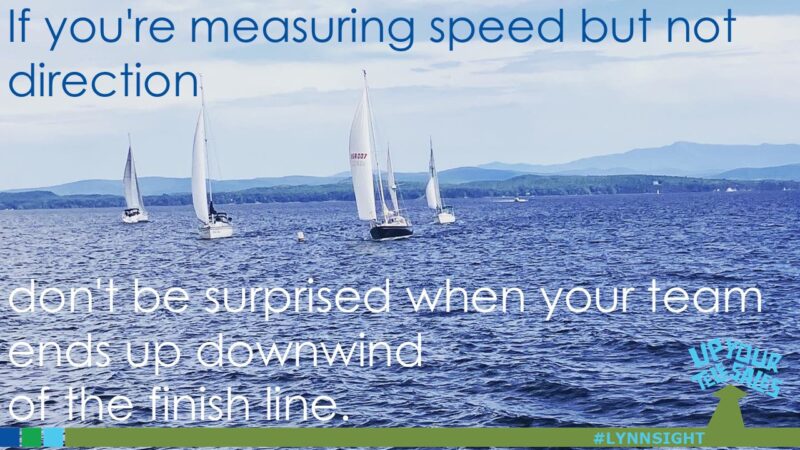Ah, sailboat racing.
From the shore, it looks peaceful. Graceful. Controlled.
From the deck? It’s chaos (and usually some yelling). Other boats everywhere. Wind shifts. Constant course correction.
You know, kind of like inside sales.
So let’s talk metrics. Because just like in racing, looking fast doesn’t mean you’re winning.
⚓ Metric Myth #1: “Activity Means Progress”
Spoiler: It doesn’t.
Just because a boat is moving doesn’t mean it’s heading toward the mark.
It might be chasing another boat because it looks exciting.
A shift in wind might force an unexpected tack. The heading could be off by a little—or a lot.
🚩 Sales teams are the same. More dials ≠ more deals. Unless you connect activity to direction, you’re just burning energy.
🧭 Metric Myth #2: “Everyone Should Sail the Same Course”
Not every boat is built the same.
Some are fast upwind. Others crush it on the downwind leg.
So why do we use the same metrics for every rep?
🚩 Setting identical KPIs for a tenured hunter and a brand-new inbound rep is like giving everyone the same sail and expecting it to make every boat faster.
🕶️ Metric Myth #3: “The Dashboard Tells the Whole Story”
Wind shifts. Currents change.
Any sailor staring at the instruments and ignoring the wind and water is gonna end up in the wrong place—or worse, hit another boat.
🚩 Metrics matter, but they’re only part of the picture. Without coaching context, you’re not leading the fleet.
So What Do You Make Sure You Measure Instead?
- Tether metrics to strategy. Every number should answer: “Does this move us toward our true north?”
- Customize expectations. Meet reps where they are. Don’t force-fit progress.
- Use data to guide conversations—not replace them.
Because winning a race isn’t about working harder.
It’s about reading the conditions, adjusting the sails, and knowing your course.

